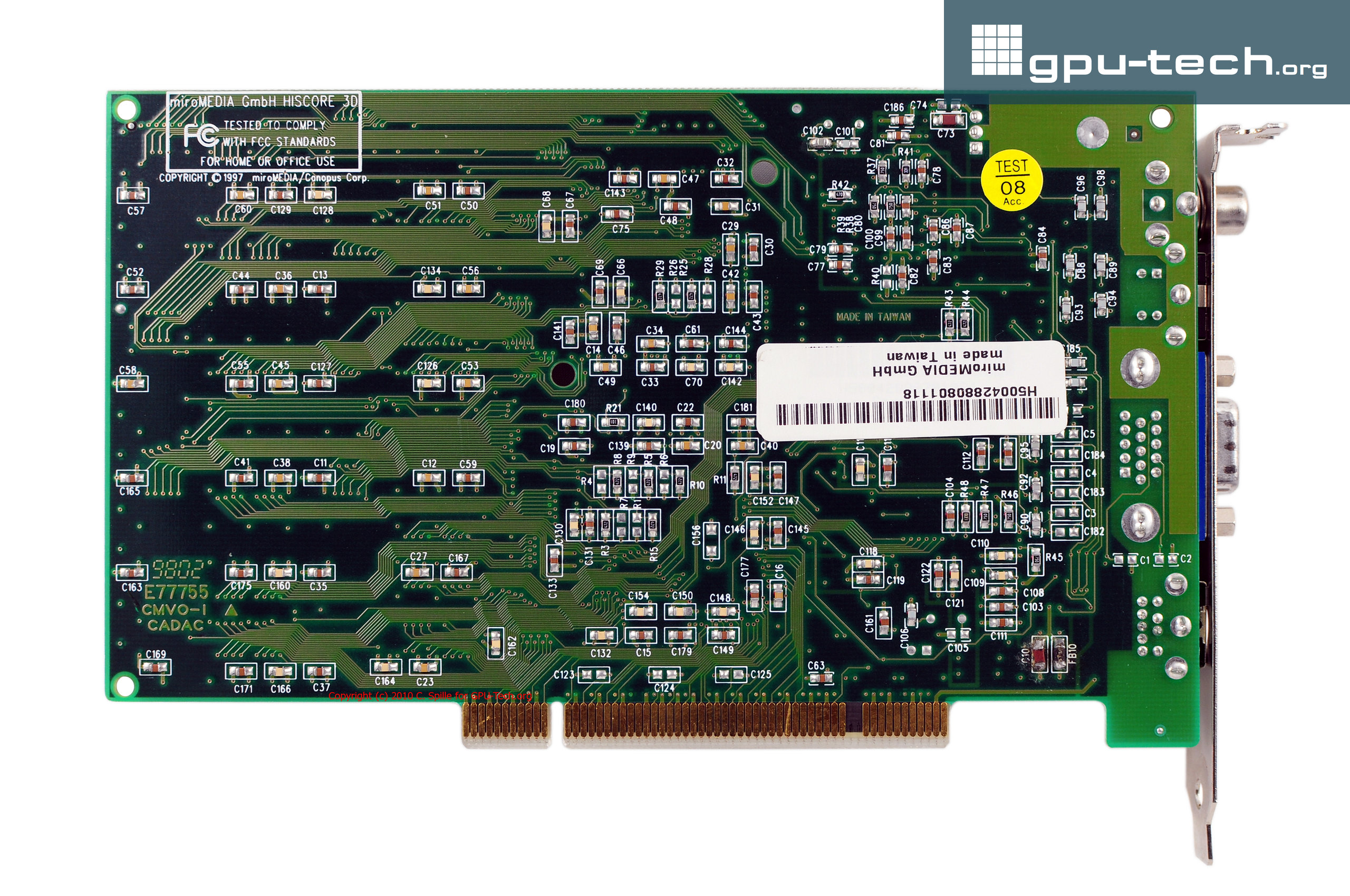
Originally Posted by
3Dfx Press Release, Nov. 6th, 1995
MOUNTAIN VIEW, Calif.--(BUSINESS WIRE)--Nov. 6, 1995--3Dfx Interactive, Inc., a company focused solely on developing technology for interactive 3D electronic entertainment, today announced Voodoo Graphics(tm), a 3D graphics accelerator specifically designed for 3D entertainment applications in the coin-operated/arcade and home consumer markets.
Designed to enable a new class of realistic and highly interactive 3D games, Voodoo Graphics offers expanded capabilities above and beyond the basic 3D functionality that will be found in commodity Windows and multimedia accelerators. Major consumer and coin-op OEMs and developers have announced support for the chipset.
"Voodoo Graphics was designed specifically to provide the highest quality, most intense 3D game experience available anywhere," said Gordon Campbell, chairman and CEO, 3Dfx Interactive. "While other manufacturers have designed 3D for a diverse set of graphics applications, our focus has always been interactive entertainment. The support we're receiving from the industry indicates our course of action is the right one."
In separate announcements, 3Dfx Interactive revealed that Orchid Technology and FMI Graphics Products, a business unit of Fujitsu Microelectronics, Inc. have signed OEM agreements to develop consumer 3D game boards based on Voodoo Graphics. In the coin-operated entertainment market Data East and Jaleco have announced support and are developing next generation arcade games utilizing Voodoo Graphics. 3Dfx Interactive is working with leading PC and coin-op game developers including Virgin Interactive Entertainment, Electronic Arts, Interplay Productions, Acclaim Entertainment, Mindscape, Sierra On-line, Looking Glass Technologies, Accolade, Domark, and over 50 other developers worldwide.
Voodoo Advantage
"All of the graphics processors that have been introduced for the PC barely meet the basic requirements for 3D," said Gary Tarolli, vice president and chief scientist, 3Dfx Interactive. "Our design goals were much higher and Voodoo Graphics incorporates state-of-the-art 3D features such as advanced texture-mapping techniques including texture compositing, texture morphing, and animated textures as well as superior filtering and MIP mapping functionality. When combined with our performance capabilities developers can produce really cool, interactive game experiences."
3D games require the combination of interactivity and visual realism. To achieve elementary 3D functionality, a graphics chip needs to support perspective correct polygons with point sampled texture mapping, Z- and double-buffering, Gouraud shading capabilities and standard VGA resolution. To take the gaming experience to the next level, 3Dfx Interactive has included level-of-detail (LOD) MIP mapping, bi-linear and advanced filtering and SVGA resolution support. In addition, the chipset delivers realistic imagery through sub-pixel correction, alpha blending, and anti-aliasing. Most importantly however, unlike other multimedia accelerators that suffer significant performance degradation when available 3D features are used, Voodoo Graphics was designed to simultaneously offer all of these features at real-time frame rates.
Voodoo Graphics also supports special effects for even greater game impact. These include per-pixel effects such as fog, translucency, and transparency, texture compositing, a variety of lighting techniques, texture morphing, animated textures, and reflection mapping. These features let game developers deliver the most realistic interactive entertainment on the market.
The Voodoo Graphics chipset supports full screen games under popular PC operating systems including Microsoft Windows 95, MS DOS, and Microsoft Windows 3.1 using 3D APIs including Microsoft's Direct3D, DirectDraw, 3D-DDI, and Reality Lab 2.0, as well as Intel's 3DR. The chipset also supports embedded operating systems for coin-op/arcade platforms. Development environments supported by the chipset include MS DOS, WindowsNT, Windows95, and Silicon Graphics' IRIX. Important development tools and APIs supported by Voodoo Graphics include Silicon Graphics' IRIS GL and OpenGL, AutoDesk's 3D Studio, MultiGen's GameGen, and Gemini Technology's OpenGVS.
"As a long-time SGI developer we're pleased that 3Dfx Interactive has gone beyond the basic 3D checklist by providing workstation-quality features and performance in their Voodoo Graphics 3D accelerator," said John Archdeacon, vice president, Gemini Technology. "Voodoo Graphics is a powerful, low-cost PC-based alternative to high-end graphics workstations. The combination of our OpenGVS software with 3Dfx hardware technology is going to offer our developers unprecedented 3D graphics price/performance."
Packaged in a two-chip set, the Voodoo Graphics architecture is a PCI Bus 2.1 compliant device that operates transparently with existing VGA and Windows accelerators via analog pass through or shared frame buffer implementations on Intel or RISC-based PCI platforms. The Voodoo Graphics chipset is priced at less than $75 in 20,000 piece quantities. On perspective correct, texture mapped, Z-buffered, filtered, LOD MIP mapped, fogged, alpha blended, 50-pixel triangles Voodoo Graphics delivers more than 45 megapixels per second fill rate and over 350,000 triangles per second polygon rates on a Pentium 90. The first chip, pixelfx, is the primary graphics controller and contains interfaces to the PCI bus and companion texture processing unit, texelfx. The 3Dfx Interactive pixelfx graphics controller is packaged in a 240-pin PQFP. texelfx, the advanced texture processing unit, is packaged in a 208-pin PQFP.
"3Dfx Interactive's announcement reflects a growing recognition that the Pentium(r) processor is ideal for multimedia applications and games," said Dev Bose, director of software development, Intel Software Technology Lab. "Complimentary solutions like the 3Dfx Interactive Voodoo Graphics accelerator are great for today's Pentium processor-based systems."
3Dfx Interactive, Inc., founded in 1994, is a privately held company headquartered in Mountain View, Calif. 3Dfx Interactive brings together a team of leading professionals from the PC, video game, semiconductor, and 3D graphics industries to provide new levels of interactive 3D electronic entertainment.
Originally Posted by 3Dfx Press Release, Nov. 6th, 1995





